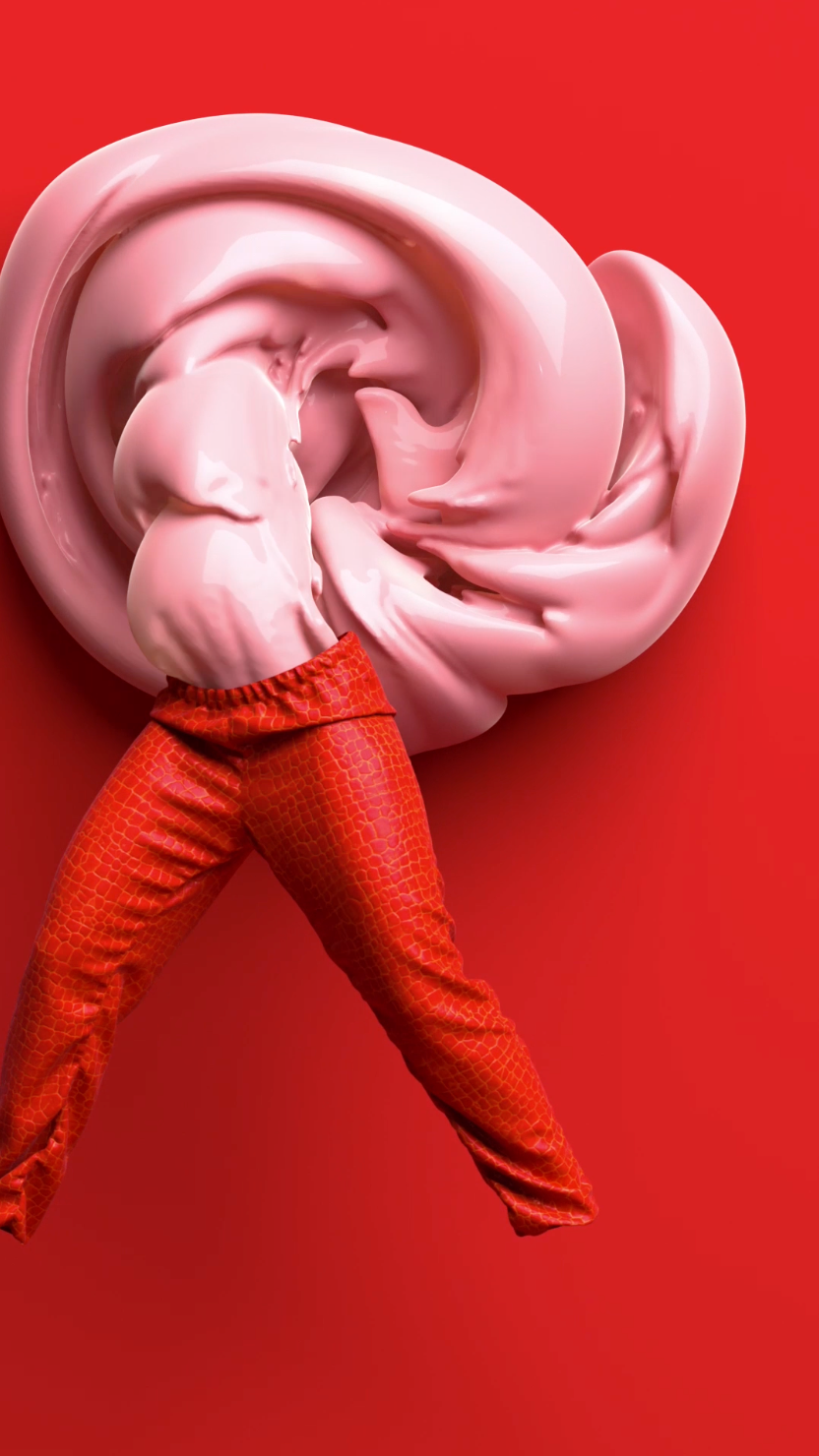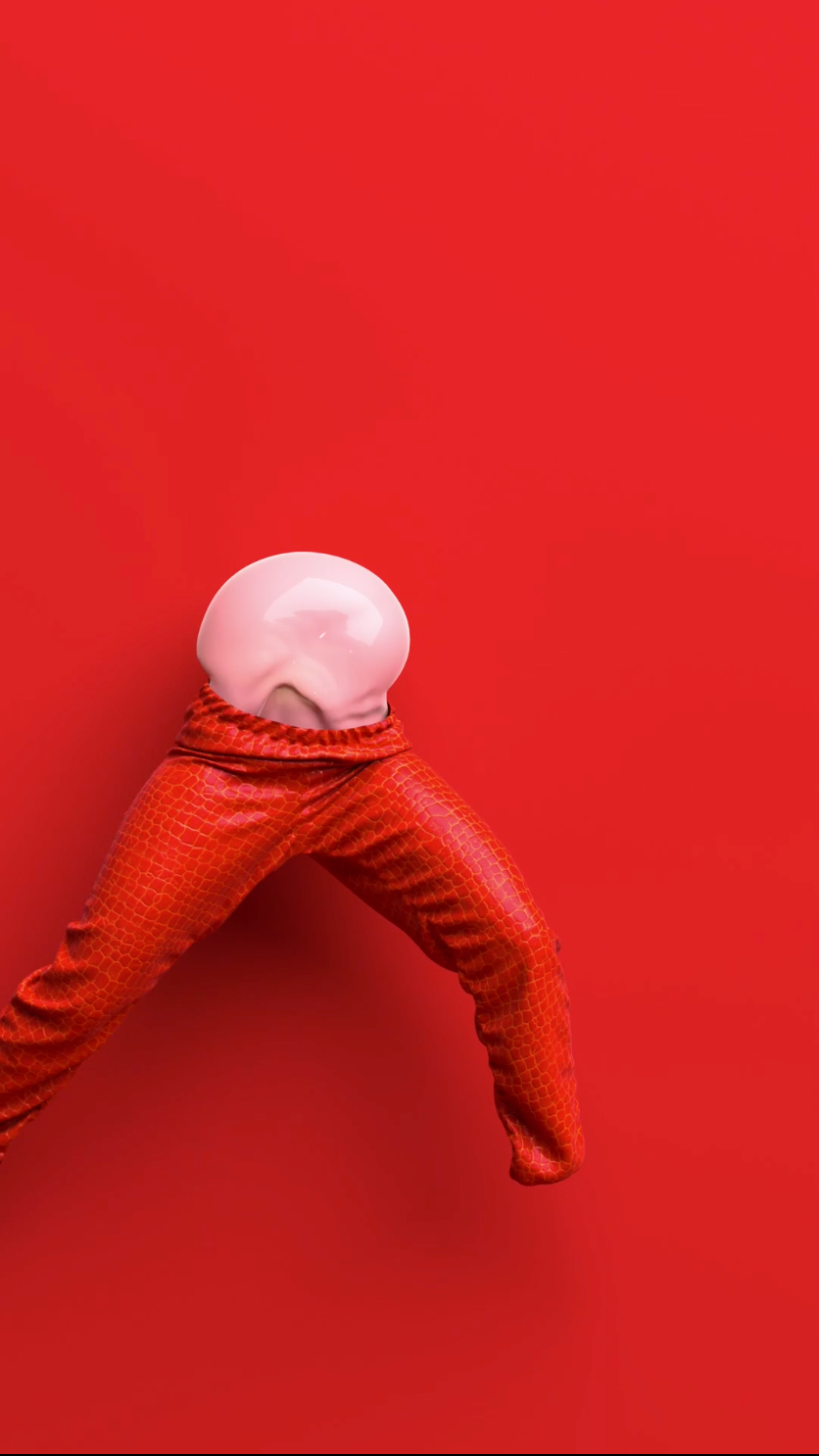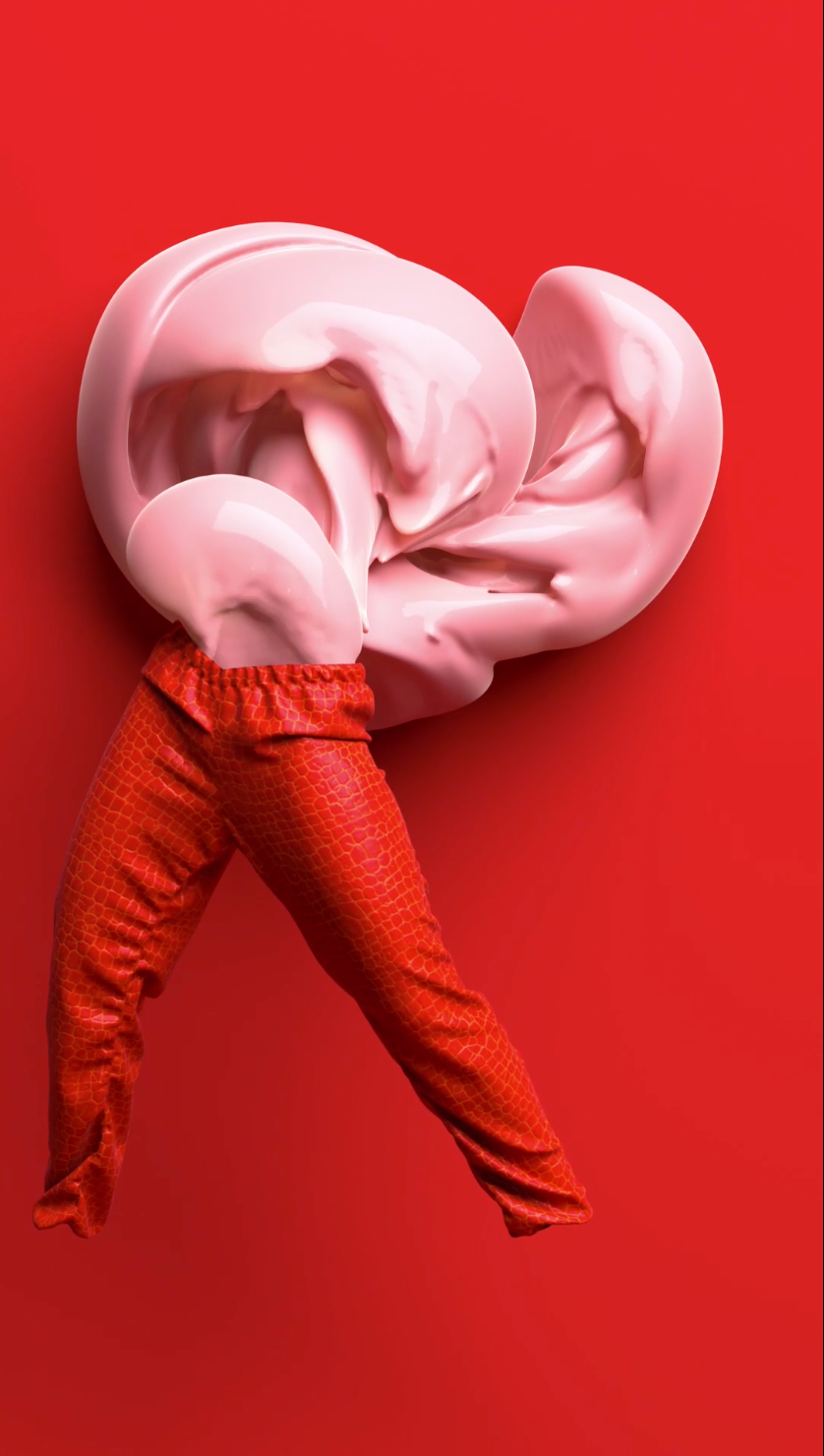From Our Collection is a monthly essay series featuring analysis of the pieces in the Museum of Crypto Art’s Genesis Collection. All essays were originally published on the MOCA Forum, where we invite you in to read, explore, and comment on these 240+ crypto art analyses.

Date Minted: August 4, 2020
Artist Description: Dancing Pants #1
Jon Noorlander describes his work as “bold, contemporary and abstract.” What a glorious understatement. Cruising through Noorlander’s SuperRare is like flipping the pages of some zany horror comic, a bursting fire hydrant of color and oddities galore, of fractured figures and faces, of things erupting from other things, swirling around other things, dancing around other things, pieces which fascinate as much as they disturb. The balancing act between these two sensations — bringing us closer via dazzle, repulsing us via grotesqueness — is the key to Noorlander’s work, and, perhaps, his wide appeal. Dancing Pants #1, the Genesis piece in his SuperRare collection, acts therefore almost as a statement of purpose. It so perfectly encapsulates the half-silly and half-horrifying nature of Noorlander’s work, doing so succinctly and with real visual pizzazz.

The first and most important thing I’d like to note is that this is clearly the work of a brilliant and talented artist. Technically, there’s much to be impressed with. Focus on the textures, the incredible realism of the erupting pink sludge that is the center of the piece, the way light reflects from it, how it folds into itself, how it spreads out in a thick smudge along the red background. Less obvious but no less impressive are the Dancing Pants themselves, made of what looks like red crocodile skin, convincingly-textured of course, but look at the folds on the pant legs. Look how they bunch and stretch depending on the movement of the invisible legs within them. Such incredibly lifelike characteristics can be no accident; that ultra-realism is vital to the effect of the piece as a whole.
Because Dancing Pants #1 wouldn’t be nearly as fascinating or successful if every part of it didn’t seem to be pulled from some distorted version of reality. One of the most obvious appeals of this piece is how disturbing it is, and that disturbance is a direct consequence of that realism. As the pants dance and as the pink sludge explodes from out of the pelvic section, we’re enraptured by the comprehension that what we’re seeing would be exactly what this would look like in real life. We can almost picture these proceedings before us, in our beige living rooms, in our backyards, walking in through that doorway to our left. This is beyond the artifice of digitalization. And it’s beyond the reality-bending abilities of even composite photography. This is an imagination made real, a scene from a dream made to waver under the weight of real physics, or, in the words of poet Mariane Moore, “imaginary gardens with real toads in them” (Poetry, 1920). And I’ll be honest: At first, I couldn’t be sure if what I was looking at was real or not. Is that not an epic zenith for a piece of digital art to attain: true realism, a true interfacing between the conceptual and the corporeal.

It’s amazing how much of a pull this piece has considering how outwardly simple it is. A pair of red pants move rhythmically in front of a darker-red background, gyrating as if dancing to an unheard beat, while from out of it, a geyser of pink goop emerges, kicked around and floating free, sticking to the background as if it’s solid, spiraling outwards in a swirling circle, a larger and larger splotch of pink gum that mercifully resets after about ten seconds.
For the record, I think this piece first and foremost aspires to pure aestheticism. In many ways, it deserves this distinction, of being fascinating and impressive enough that it can succeed simply on the basis of how it looks, that it will be seen, appreciated, laughed at, cringed at, shared, exalted, bought and sold and maybe bought again simply on its external merits.

But there is one underlying meaning I think is worth exploring here, because the images here so clearly, in my opinion, are overtly masculine, sexual, and penile.It all comes from the interaction between the pants and what comes out of them (Doesn’t it always?). The pants move around lasciviously, thrusting hips and gyrating sensually, and from them emerge a stream of pink that over-and-over again takes on the characteristics of a penis: At times there are the defined mushrooms shapes of a circumcised tip, and elsewhere there seem to be penile shafts, with surface mimicking them in color and texture. It all provides for an oddly erotic feeling. Maybe it’s at first difficult to put one’s finger on why this piece is so repulsive, but its distortion of sexuality somewhat explains that. So many good horror movies use this same tactic (Splice, Psycho, It Follows) of making sexuality into something demented or gross. Do both not apply here?

But if demented sexuality is indeed a keystone for this piece, did Noorlander intend Dancing Pants #1 to make any more specific comment on sexual politics, or is this simply meant to mock males for being so in thrall to the sex organ they carry with them, that makes their pants “dance”? I hope so: That’s hilarious. And it might very well be true: Artists with grand social or political commentaries as their aim may not often indulge in the hilarious; understandably (especially in pre crypto-art epochs), they may tend towards the more self-serious. Dancing Pants #1, meanwhile, is the antithesis of self-serious. This piece is comedic. It’s hairbrained. It pulses with Robin Williams-style deliriousness. And if Noorlander did want it to communicate some ultra-specific moreness, or if he wanted it to be appreciated for more than just its aesthetics, then, well, he might have made it far less aesthetically-pleasing. All beware the dangers of beauty. Because as is, Dancing Pants #1 is perfect. A riot. Fits right in with the rest of his work.